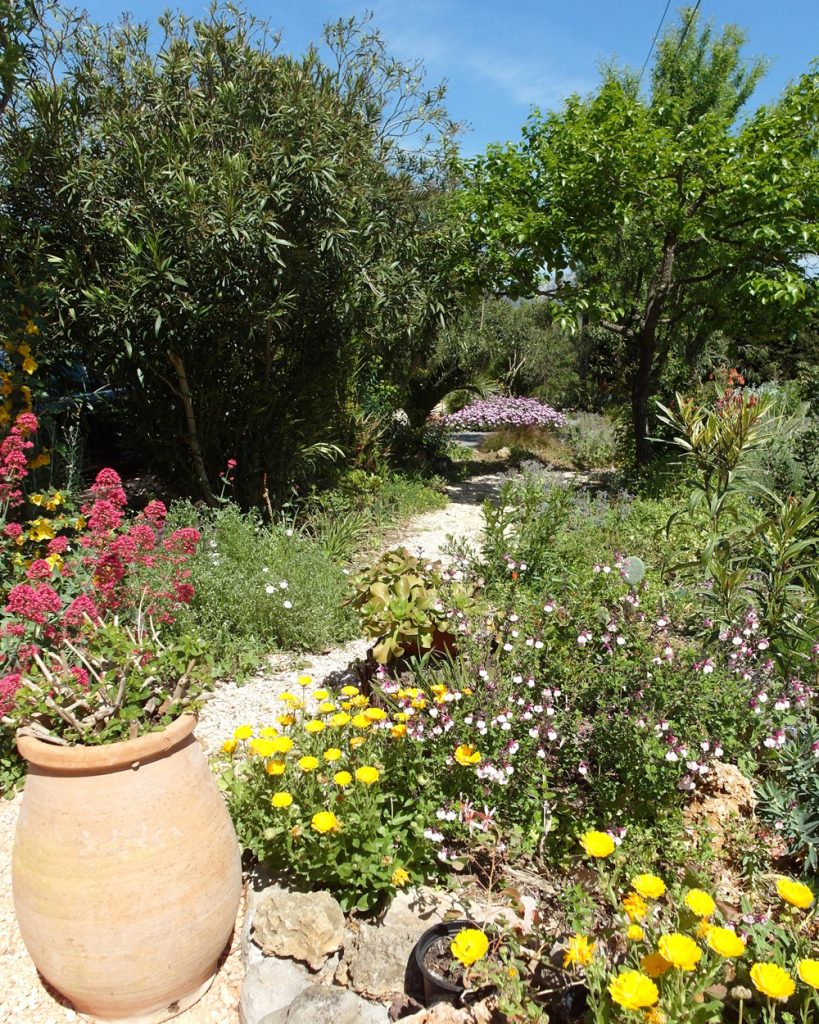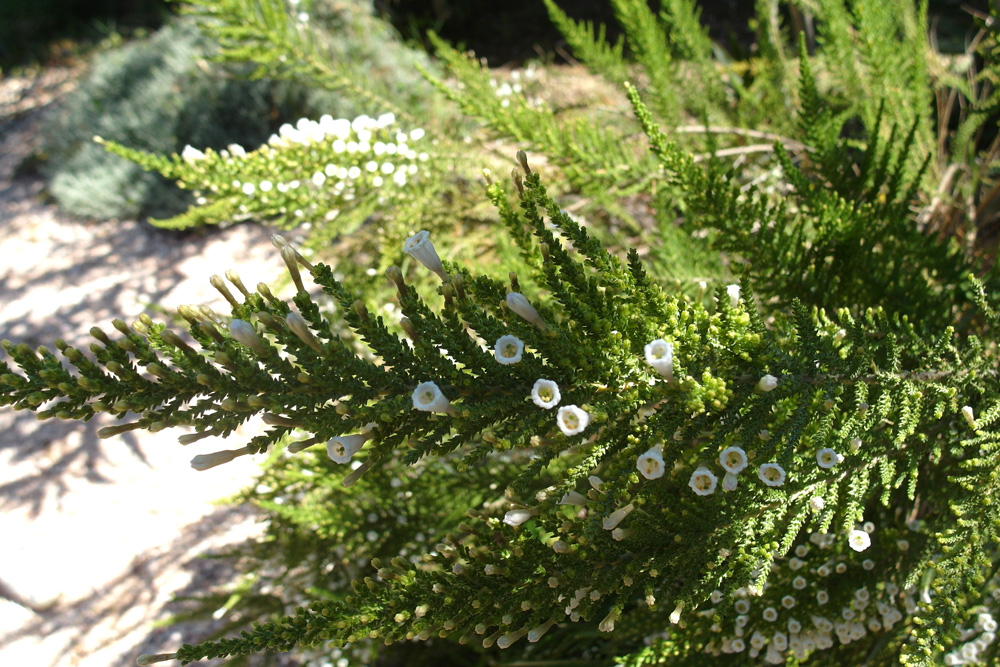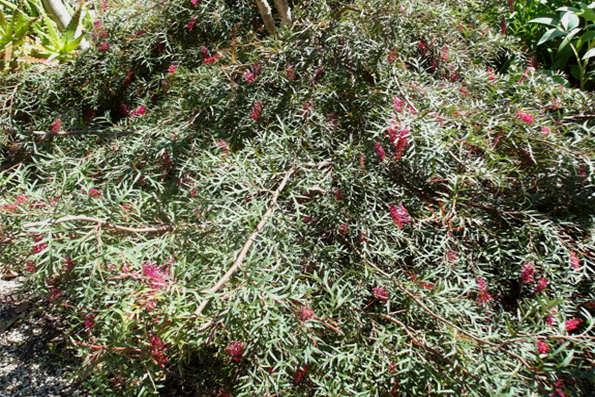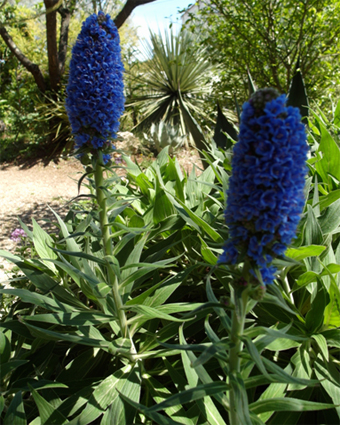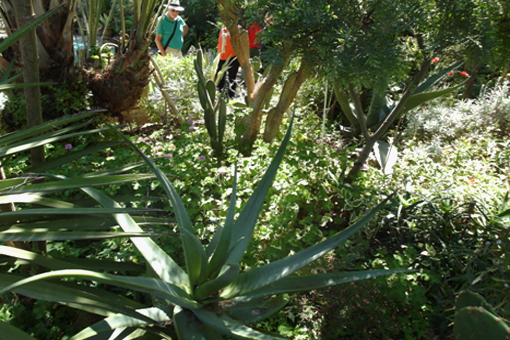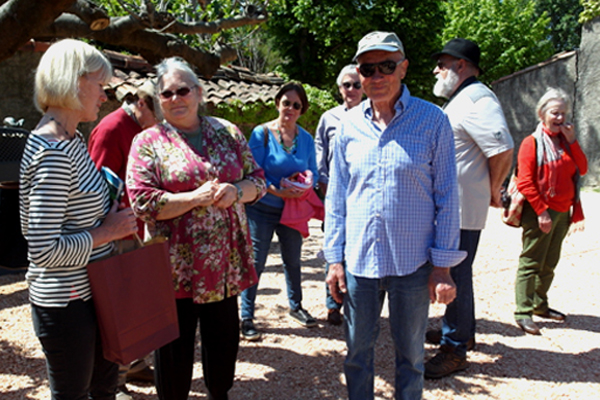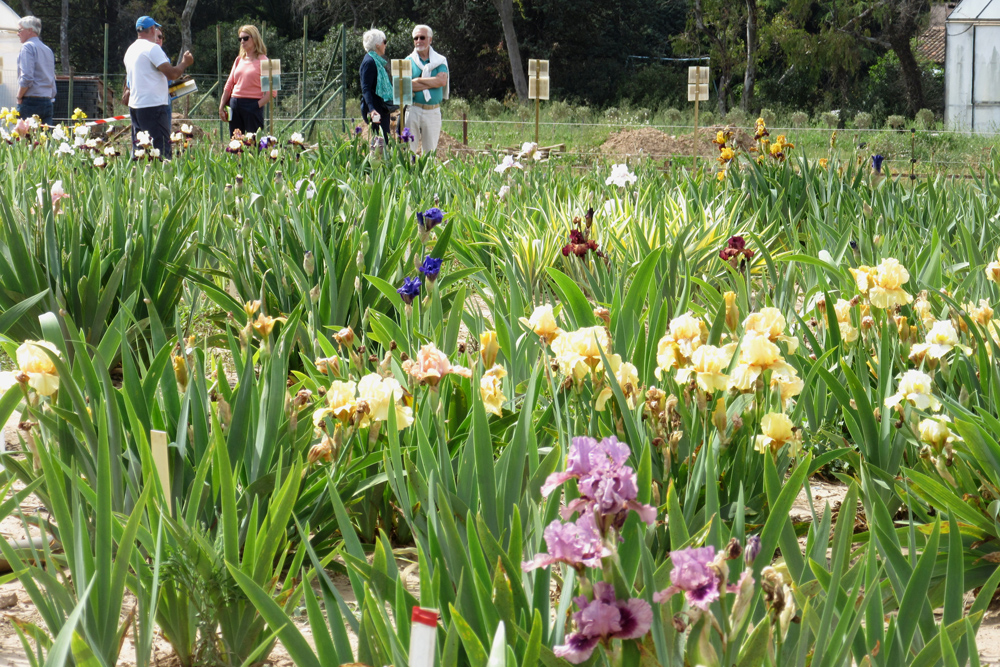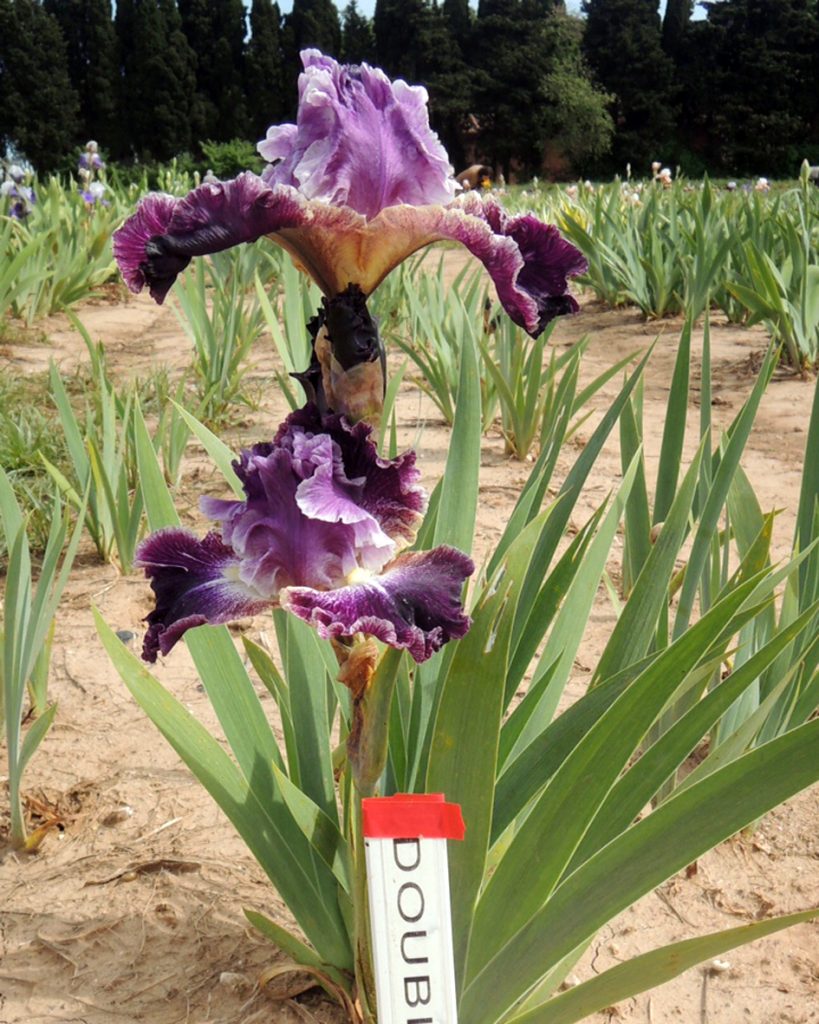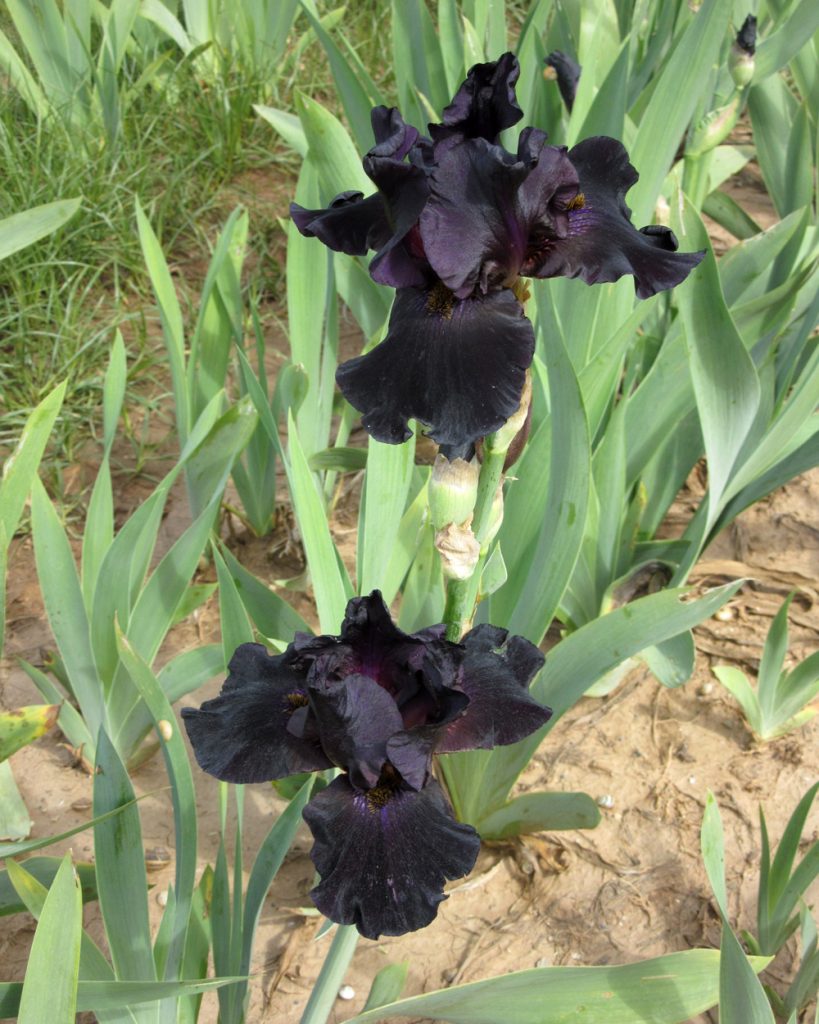April / avril 2015
A garden near Toulon and a visit to ‘Iris en Provence’
Click on an image to enlarge it / Cliquez sur une image pour l’agrandir
Le jardin de Mr et Mme Navarro
Quand j’ai visité pour la première fois le jardin de Mr et Mme Navarro sur la côte varoise, j’ai été fort surprise. C’était la première fois où je voyais des cactées et succulentes côtoyer des plantes vivaces et des arbustes. Et c’était beau!
Ce jardin a été conçu il y a 40 ans sur un hectare de terrain à vignes dans lequel ils entretiennent une collection d’agaves et de plantes succulentes impressionnante. Mais, la jardinière finit par trouver qu’un jardin de cactées c’était un peu triste et monotone. Alors elle décida de marier ces succulentes à des plantes vivaces et des arbustes pour alléger et arrondir un peu les structures fortes de ces agaves et autres cactacées.
C’est pourquoi ce jardin est unique, enrichi de palmiers et autres plantes exotiques. Bien sur, le climat varois permet de cultiver beaucoup de ces plantes en extérieur, mais pour les frileuses, il a fallu des serres. Et, ne reculant devant rien, les propriétaires rentrent 2000 pots à l’abri tous les ans pour les ressortir au printemps.
Texte et photos: Chantal Guiraud
Iris en Provence, near Hyères
The nursery is very simply laid out. In essence it’s very large open field with some greenhouses at the far end. Near the entrance is a big kiosk roofed against sun and rain, but open on all sides to the elements, serving as the sales and information point.
Pierre and Monique Anfosso started their specialist nursery in 1974. We were welcomed by their daughter Laura, who gave a short talk.
A member asked why an iris planted last autumn had not yet flowered. Laura said it could be because the rhizome was not mature enough, or perhaps the variety was one which flowers in late spring. New plants need to be watered regularly for their first year. To ensure good flowering every year she recommends a weekly watering (twice weekly for remontants) and the use of a fertiliser low in nitrogen, i.e. the N (nitrogen) value marked on the packet should be less than 10, otherwise it will promote too much leaf growth.
Irises should be thinned out at 4 to 5 year intervals.
After the talk we split up to look at plants for sale, demonstration plants and developing new hybrids. There were several rows of carefully labelled irises and hemerocallis for sale, organised by type, including a range of scented irises with aromas such as vanilla, chocolate and passion fruit.
There were also remontant irises, which this year (mild and wet) had flowered throughout the winter. At the far end of a very large field we could just about see the long rows of irises growing in the ground. Plants bearing a blue band were created at this nursery and those with a red band were in the course of multiplication.
Iris en Provence breed only iris whose ancestors were Iris germanica. Rhizomes of this plant were brought to France and Britain from Germany in the mid 19th century. Hybridisation is a long process, taking about 5 to 6 years to achieve. Selected flowers are pollinated by hand, flowers allowed to seed, and the seeds then sown in the ground, taking two years to flower.
The new hybrid plants are kept only ‘if interesting’. At Iris en Provence, this means either that they should look unlike anything already in existence, or that they are developing desired characteristics. This is a small family business which aims for diversity in its plants, rather than merely a large number of varieties.
The selection process continues, with two further steps. A ‘good’ plant is one which produces lots of flower buds, and subsequently, one which multiplies well. Only about 10% of new hybrids make it through this six year selection process.
An amusing moment for me was seeing the staff take off at high speed in pursuit of visitors. We couldn’t see a problem. In fact, visitors were stepping across the lines of irises instead of walking up and down the rows. It was explained that this might compromise some of the hybridisation process or damage buds or flowers.
Many of us bought irises at the end of our visit and despite the fact that Iris en Provence has a very good website, some of us couldn’t resist buying a catalogue for 1€. Old habits – and irises – die hard!
One last personal thought: the irises in our garden, even those now in deep shade, are flowering more vigorously this year than in any of the last ten. Some are even flowering for the first time ever. We put it down to our very wet winter.
Text: Julia Petty
Photographs: Graham Petty and Christine Daniels
![]()

